|
|
| Пишет marinni ( @ 2009-12-23 17:02:00 |
|
|
|
|
|
|
|
|
|
|
|
|
|
|
Старинные редкие часы


Здесь есть очень редкие часы-автоматоны из музеев, часы 16 века, много очень интересных "сюжетных" часов.
-----------------АВТОМАТОНЫ-------------
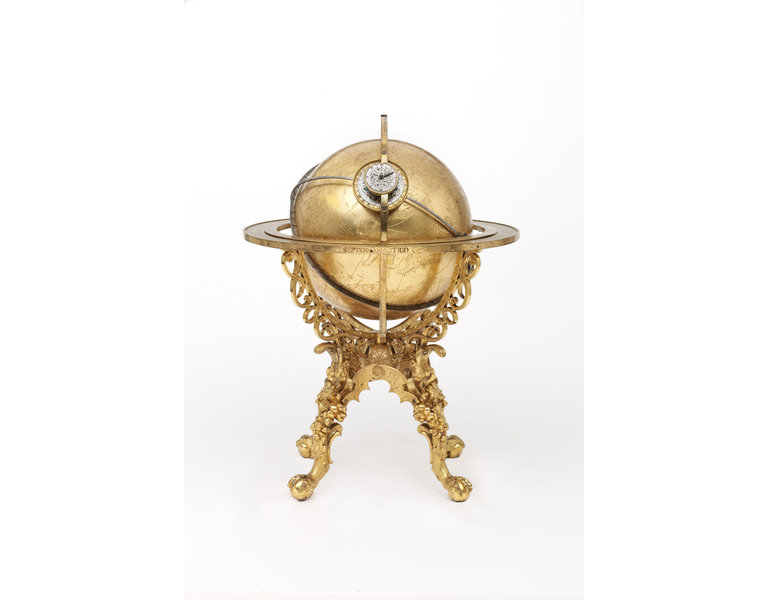
Mechanical globe clock
Place of origin:Augsburg (made)
Date:1584 (made)
Artist/Maker:Roll, Georg (maker)
Reinhold, Johannes (maker)
Materials and Techniques:Copper alloy, cast, engraved, punched and gilt
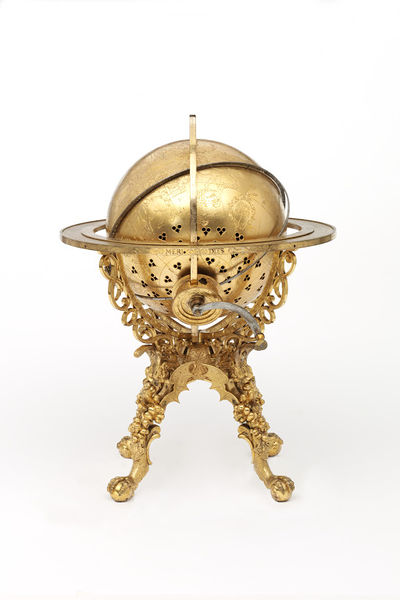
This mechanical clock was bought by the Emperor Rudolph II in 1584 and housed in the Imperial Treasury in Prague. The globe served as a model of the universe simulating the movements of the sun, the moon and the stars. It could predict the movements of celestial bodies at any time in the past and the future and could tell the time by the position of the stars.
-----------------------
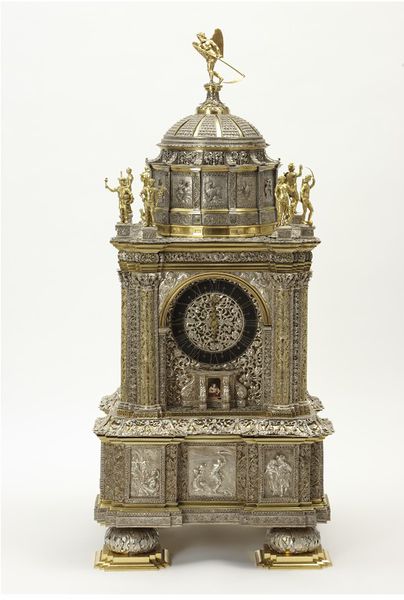
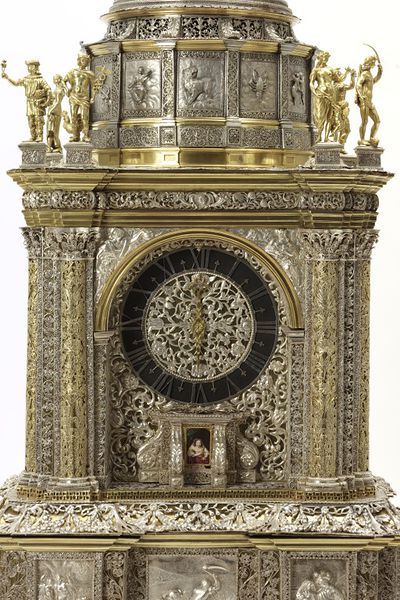
Clock
Place of origin:The Hague (made)
Date:ca. 1665-1670 (made)
Artist/Maker:Breghtel, Hans Conraedt (designer and maker)
van den Bergh, Adriaen (movement, maker)
Materials and Techniques:Silver and silver-gilt, pierced, embossed, filigree
-----------------------

Made in Poland
Date
1575-1585

Copper-gilt oval table clock; sides and base richly embossed and chased with formal scrolls and fruit; top engraved with delicate scrollwork and figures of man with pack and milkmaid and cow (automata); former holds staff and revolves in dial of which staff points out the hours.

---------------------------

Musical Clock with Spinet and Organ
Veit Langenbucher (1587 - 1631)
Maker
Samuel Bidermann (German, 1540 - 1622)
Object Name
Date
ca. 1625
-----------------------------------
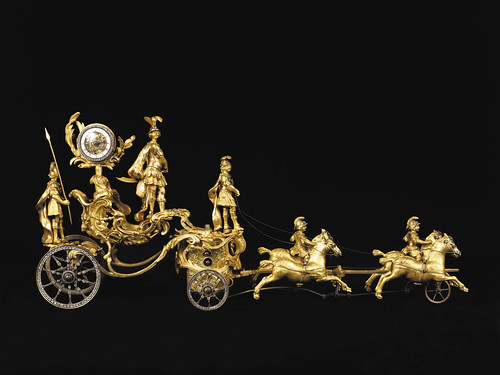
Automaton.
Movement by James Upjohn (English, active ca. 1760). England, ca. 1760.
Gilt bronze, diamonds, paste, enamel clockworks.
A la Vieille Russie
Cooper-Hewitt
National Design Museum
-------------------------------
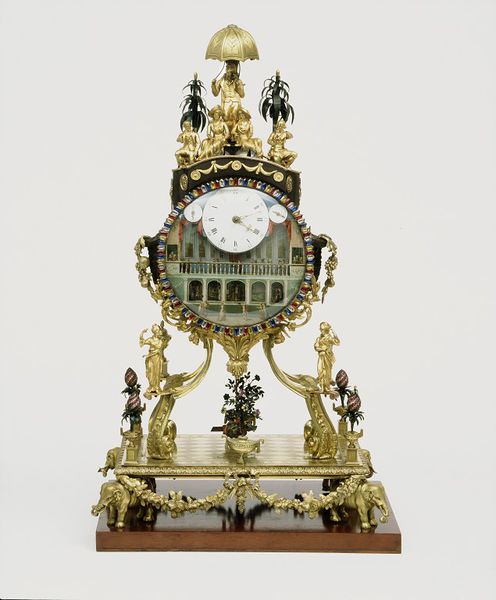
Automaton clock
Place of origin:London (made)
Date:ca. 1780 (made)
Artist/Maker:William Carpenter (maker)
Materials and Techniques:Clock case, mechanised figures and bells of gilt brass, with enamelled and glass paste decoration
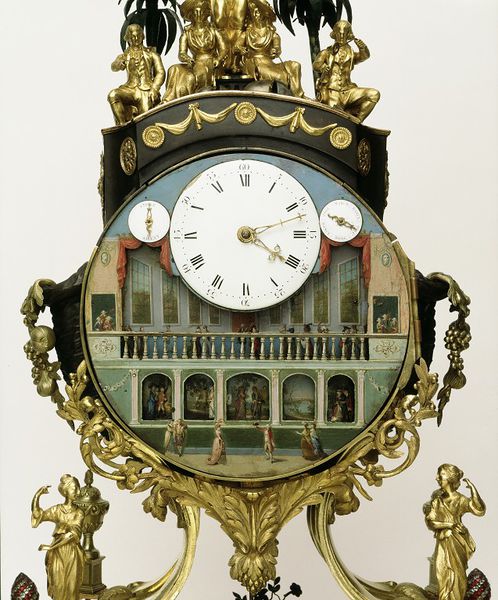
This musical clock by William Carpenter is typical of the kind of elaborate exotic time-piece made in London for export to the East in the late 18th century. Turkey, China and India were the principal destinations for these clocks.
-------------------------------

Antique French Empire ormolu automaton clock of the dog Barry.

Unusual French Empire automaton clock depicting the famous rescue of a young boy by Barrie. The dog died in 1814 and this clock is dated 1816. Very fine quality case with original fire/mercury gilding. 8 day bell striking movement with silk suspension. The automaton outside bell strikes on the hour and half.
-----------------


A very rare French Empire automaton carouselle clock in patinated bronze and ormolu by Vaillant a Paris. Of exceptional quality to casting and finishing and with its original mercury gilding and patination. The octagonal base with applied ormolu mounts of cupids blowing trumpets, ormolu busts of hypographs to the sides, griffins below the white enamel dial and cornucopia around the upper edge. A central stem rises upon a superb stepped base and connected to this are three ormolu figures of Mercury, Cupid and the Jester sitting upon swans that at each hour or at will by turning a lever at the back, that rotate around the central stem for several rotations and then stop. Circa 1805.
----------------------------------------

Часы-автоматон в виде паровоза с чернильницей. Бронза, перламутр
Palais Royal automaton cowtail Zapler clock in the form of an early 19th century steam locomotive as a desk set with inkwell and sander. The mother of pearl desk set with four ormolu feet beneath a tray made of panels of mother of pearl. The facet cut blue glass inkwell and sander with ormolu tops set in floral ormolu holders.

1830
--------------------

DIT LE PASSE ET AVENIR L` ", described as the one who knows the past and sign foretells the future." France, Diraectoire era circa 1795. Ziffbl.. "Vaillant à Paris" chased and gilt bronze. Eight Days works with anchor gear, thread suspension of the pendulum, beat on bells to full-and half hour on bell.
--------------------------

French Water Wheel Timepiece


This rare and extraordinary French eight-day timepiece celebrates the advances made in the industrial field in the 19th century. Almost certainly crafted by the famed A.R. Guilmet, this clock is finely constructed of silver and patinated brass, in a form resembling a brick mill or factory, atop a base of brass and red marble.
----------------------------

automaton picture clock. Set in a fine gilt frame with the painting protected by the original glass. The picture in oils on metal is of a harbour scene, very well painted. A ship with storm sails only can be seen tossing and bucking in the fierce seas. There is a clock in the church on the hill. There is an early musical movement operated by pulling a cord. The automaton movement is by Cailly and the movement in the church although having a miniature dial is a full sized movement signed by Hry Mark with a silk suspension and striking the hours and halves on a gong. French. Circa 1840 34

Automaton and musical picture clock by Cailly and Hnry Mark Paris
---------------------

antique automaton clock set of industrial steamhammer and rollers.

automata clock with inverted Y shaped form in patinated and gilded bronze . The platform to the left of the clock with silvered bronze operator linked via a mock steam whistle handle to the imitation vent and whistle on top of the case. The steam hammer rising and falling with the pendulum. The patinated bronze dial with Roman numerals and gilt hands. The 8 day movement rack striking on a bell. The compound pendulum linked to the steam hammer making it rise and fall. The candelabras conforming to the clock but are in the form of roller presses.
----------------------------Башни-автома


Strasbourg Clock
Inscription Content: ISAAC HABRECHT FABER AVTOMATA RIVS ET CIVIS ARGENTORATENSIS 1589
Carillon clock; weight-driven musical clock; originally controlled by balance wheel, movement converted to pendulum in 18thC; outer case of gilded brass, engraved with figures personifying the three theological virtues (Faith, Hope and Charity), the three worldly virtues (Wisdom, Fortitude and Justice) and the three fates of man on the back.
Height: 140 centimetres
Width: 38.5 centimetres
Depth: 38.5 centimetres

The Trustees of the British Museum.
-------------------
-----------------

Antique automaton industrial clock in form of lighthouse with rotating light
industrial clock with torsion pendulum which as well as regulating the clock's timekeeping moves the large lighthouse prism lamp from side to side as the pendulum beats. In the shape of a typical 19th century lighthouse with brick or stone blockwork with a broad base and tapering towards the top, having windows set in the column. The clock has a black marble base and the clock face is set as the lighthouse door. The top of the lighthouse has a gallery surrounding it. The clock is of 8 day duration and strikes the hours and halves on a bell. The clock has a gilt dial and blued steel hands. France circa 1890
-----------------------------------


Fine ormolu and red marble ormolu automata clock in the form of a Gothic well, based on a similar piece in the Wallace Collection. There is an 8 day timepiece movement below the well and a barometer below that. The case stands upon a shaped griotte marble base. The fine ormolu case exhibits corbels rising to peacock finials and to the top of the cupola, dolphins. To the sides are seamonsters cast in high relief. A separate movement drives the automata in the form of a twisting glass rod giving the appearance of flowing water. The cupola is held up by four beautiful columns in the form of palm trees. France circa 1880.
---------------------------ЧАСЫ-БАШНИ---

Viennese Silver & Lapis Conical Clock Tower Set constructed with immense complexity and unmatched artistry, this rare and incredible Viennese conical clock tower set is one of the finest examples of Austrian silver and enamel craftsmanship ever made.


1865
----------------------------------------
------------------------------

913,000 €

Considered to be the greatest sculptural clock ever made, this exceptional Régulateur Louis XV surmounté du Motif le Temps is the second of only six known to have been made by the master cabinetmaker François Linke. The result of a very successful collaboration between Linke and designer Léon Messagé, this clock was constructed especially for the 1904 St. Louis Exposition after the success of it predecessor, which was itself specifically created for the 1900 Paris Exposition Universelle. Standing over 10 feet tall, the magnificent inlaid tulipwood and fruitwood case is richly decorated in mythological and natural motifs rendered in cast bronze ormolu.


--------------------------

Brass cased clock in shape of lighthouse; time-keeping movement with going barrel and platform escapement with ratchet-tooth lever escapement mounted half way up the tower; second clock-work mechanism housed in base turns the faceted glass cylinder that houses the light.
1875-1885
----------------------БРОНЗА------------

Clock
Place of origin:Augsburg (made)
Date:1564
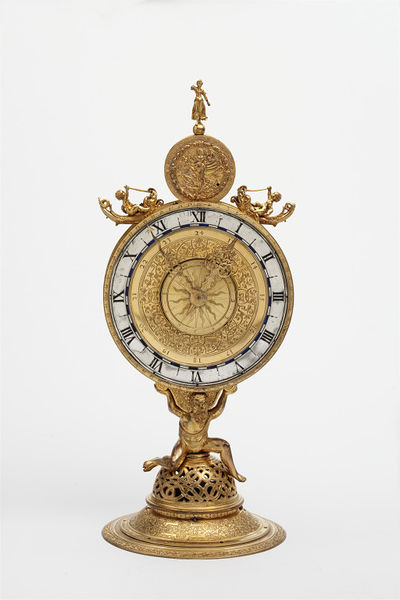
Clock
Place of origin:Augsburg (made)
Date:1564 (made)
Artist/Maker:Metzger, Jeremias (maker)
Materials and Techniques:Gilt brass with enamelled silver dial ring
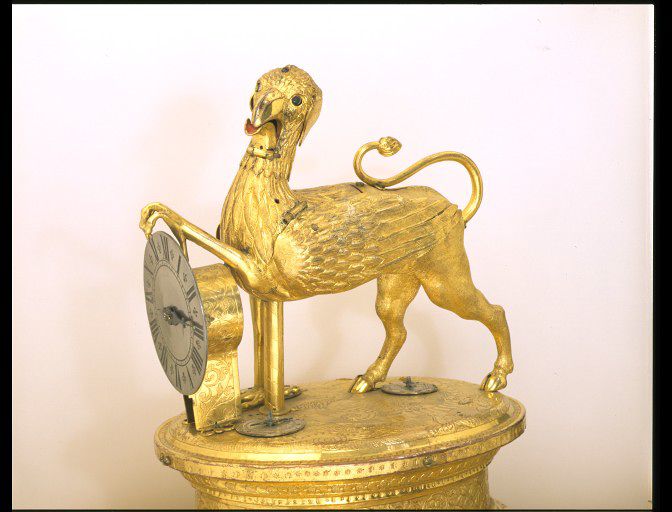
???http://collections.vam.ac.uk/item/O3

Francesco Righetti
Technique : Chiselled
Main material : Gilded bronze
Period of creation : 1810
Country of creation : Italy


Highly important and rare Italian neo-classical clock. Rome, circa 1810. Possibly after a design by Francesco Righetti. Francesco and Luigi Righetti, important goldsmiths, active at the end of the eighteen century in Rome
----------------------------------

- Vienna, circa 1810, the gilt bronze casing is held by four dolphins on a marble base and topped by an eagle. Marble pedestal with gilt ornaments on lion's feet, double pendulum in the form of horse carcasses.
----------------------------

Pendule au bon Sauvage - "Nègre nonsmoker. (probably Portrait of slave liberator Toussaint L'Ouverture, 1743-1803). Roller plaything: Capt. Henry (Geneva 1802-1811) with four different melodies. Bronze: attr. Pierre-Philippe Thomire (1751-1843). Paris to 1825th gilt, chased and patinated bronze.
--------------------------------

---------------------

Pendulum Clock "The chariots of Telemachus. Design and Bronze: attr. "Jean Andre kingdoms" (from 1752 to 1817). France, Empire era approximately 1800. Ziffbl sign .-. "Oudin eleve de Breguet. excellent composition with excellent gilt and patinated bronze eight-day movement with anchor gear, thread suspension of the pendulum strike on a bell to the full - and half an hour.
---------------

Pendulum Clock "The study of astronomy." Design and Bronze: attr. Claude Galle, 1807 France, age empire in 1810 and chased gilt bronze, marble vert-de-mer eight-day movement with anchor gear, thread suspension of the pendulum strike on a bell to the full - and half an hour.

Pendulum Clock "skeletonized." France Louis XVI era. around 1780. Ziffbl sign .-. "Lepine à Paris". gilt bronze, white marble, enamel.

Pendulum Clock "au bon sauvage" with the "Matelot". Design and Bronze: attr. MICHEL to 1808th France, Empire era to 1808th Ziffbl.-sign: "Lesieur à Paris" gilt and patinated bronze. Enamel Eye Eight-day movement with anchor gear, thread suspension of the pendulum, impact on a bell to the full - and half hour
-----------------------------

Pendulum Clock "au bon sauvage" with the "Portefaix. France, Empire period in 1810. Ziffbl.-sign. "Delecouillerie à Tournay" gilt and patinated bronze. Enamel Eye Eight-day movement with anchor gear, thread suspension of the pendulum, impact on a bell to the full - and half hour

Pendulum Clock "au bon Sauvage" L'Amérique ". France Period: 1799 draft and Directoire Bronze: attr. Jean Simon Deverberie (1784 to 1824). Gilded and patinated bronze eight-day movement with anchor gear, thread suspension of the pendulum, impact on a bell to full-and half-hour.
--------------------------

Pendulum Clock "Boat of Chronos" The love and time ". France Period: Empire at 1805th Ziffbl. sign.: BLANC & FILS PALAIS ROYAL. Gilded bronze eight-day movement with anchor gear, thread suspension of the pendulum, beat on. Bell to the full - and half an hour.
-------------------------

The Michelangelo Clock

A spectacular and rare French clock of marble and dore bronze by renowned Parisian ebenisteand artisan Paul Sormani, paying tribute to the master Michelangelo. Mounted on the front is a plaque which reads, 'MICHEL-ANGE ANNO 1474-1564 ROME. The enamel dial is signed, 'Sormani, Paris.' Circa 1870.
----------------------------------------

French clock in patinated and gilded bronze. The dial is flanked with Nikes and winged horses, it is surmounted by a gilded bronze Bacchus and a finely engraved ibex. Very good condition. Empire Period, Circa: 1815.
-----------------------


Pendulum bronze ormolu and patinated. Empire Period, 1800-1850. Escape to floss. Ringtone hours and half hours. Guaranteed in perfect working condition. C. Hirsch, an expert at the trial.

Antique French Empire mantel clock of Madame Recamier signed Vaillant 1805
---------------------------------------

Antique rare desk chess and gambling compendium in bronze and silvered bronze.
1880

Antique French Empire mantel clock of Madame Recamier signed Vaillant
Extraordinary quality French Empire mantel clock inspired by Madame Recamier. Dial signed by Vaillant, case almost certainly by Claude Galle, Napoleon's favourite Bronzier, and now with early 19th century English double fusee movement. Without doubt one of the most beautiful and stylish French Empire clocks ever made. The lovely female figure in classical dress sits upon the superb day bed with a pier glass behind her.
1805

French Empire mantel clock in ormolu of classical figure.
Pendulum Clock "au lion" with a plaything. France, Era: Louis XVI. approximately 1770th Sign Ziffbl..: DENIS - FRANCOISE DUBOIS, Paris, Champion 1767th Bronze plated and engraved gray-taken by a base with fire-gilded bronze applications. Carillon has 13 bells plays 10 melodies.
--------------------

Fine French Directoire or Empire period ormolu clock of Venus and Cupid attributed to Claude Galle.

French Directoire period mantel clock in two tone fire/mercury gilded ormolu of the finest quality which we can confidently attribute to one of Napoleon Bonaparte's favourite bronzier's Claude Galle. Signed on the white convex enamel dial "a Paris". 8 day bell striking movement with silk suspension. Original springs signed by the famous spring maker Monginot and dated to the month Floreal An 13 or May 1805, a matter of 3 months before Napoleon signed the edict re-establishing the Gregorian calendar to France.

Женщина у алтаря любви dated 1810.
Antique French Empire clock of woman at altar of love.

Antique French Empire ormolu clock of the "Sermon of Amor" or woman praying to Ovid
A magnificent version of this rare French Empire ormolu mantel clock “The Sermon of Amor”. The ormolu is in mint condition, untouched since the clock was made circa 1810. The white enamel dial is signed Henry a Abbeville and the hands are well cast and finished and mercury gilt. 8 day bell striking silk suspension movement.

French Empire mantel clock in patinated bronze and fire or mercury gilt ormolu of Narcissus looking at his reflection in the water. Superb ormolu mounts of sea monsters and naiads around the base. Paw feet with bullrush mounts above. To each side of the dial are female figures representing "La Source". To each side of the clock ormolu water falls into a shell from the mouth of a water god. Fine white enamel dial with superb gilt bronze hands. Large 8 day movement, bell striking the hours and halves and having flat bottomed plates and stamped to the plates M P. Dated 1808.

French Empire mantel clock of "La Lecture" designed by Reiche.
This is perhaps the most famous of a series of clocks that were designed by Jean-Andre Reiche at the beginning of the 19th century and were used extensively in the palaces and great State buildings in France and its Empire.
------------------------------

A very fine French Charles X period mantel clock after Thomire and almost certainly from the Thomire workshops. A popular model known as " The Bubble Blowers" it is a conceit on the fickleness and transience of time.

French empire ormolu mantel clock representative of astronomy. Good chamfered base on toupee feet with applied astronomical mounts. The muse stands beside the clock with a globe above. To the right is a period telescope. The enamel dial signed Botty Lefebre a Liege. 8 day bell striking movement on silk suspension. Circa 1810.

Miniature pendule au negre blackamoor clock. Circa 1810 French.It has all the original gilding, original enamelled eyes and is in excellent condition. 7 inches tall, 6.25 inches wide and 2.25 inches deep. It dates from circa 1805 and the movement is signed Marcus Lechner in Wien.
-----------------------

French Empire clock of Venus uncovering Cupid.

Circa 1806. Identical model in Palace of Fontainebleau bought in October 1806 for the secretariat d'etat de l'Empire francais a Fontainebleau, chambre de Madame Maret.

A rare and unusual French Directoire/ Empire clock depicting Daniel Defoe's "Robinson Crusoe". It shows Crusoe wearing goatskin, carrying his rifle and a palm umbrella and having scabbard and pistols in his belt. To his right is a palm tree and a parrot. This particular clock can be dated with certainty to 1809/1810 as some years ago we sold an almost identical model with the musical movement numbered 1902 ( some 60 movements later than this one) and original mainspring dated 1810.
---------------------Из разных материалов-----------------
----------------------------------------

Frédéric-Jules Rudolphi : Faune : Nessos : Amour : Déjanire : Enlèvement de Déjanire par Nessos : Encrier-pendule
Date : 1844
Material : Silver, Gilded silver, Lapis-lazuli, Cameo

Frédéric-Jules Rudolphi : Faune : Nessos : Amour : Déjanire : Enlèvement de Déjanire par Nessos : Encrier-pendule

Antique French Napoleon III Blue John and ormolu circle de tonneau vase clock
Exceptional and very rare English Derbyshire blue john vase clock. The main body is polished from one large piece of 'blue john' of distinctive colouration. Ormolu swan neck handles and acanthus leaf mounts bisect the marmo nero belgio base slips with the 'blue john top surmounted with an ormolu pineapple finial. The French movement with annular dial, lever escapement& bell striking the hours and halves. Circa 1860-80.
----------------------

Слоновая кость
French Victorian boar's tusk ivory and gilt clock and 3 arm candelabra set (pair of candelabra: 24" high) (circa 1860)
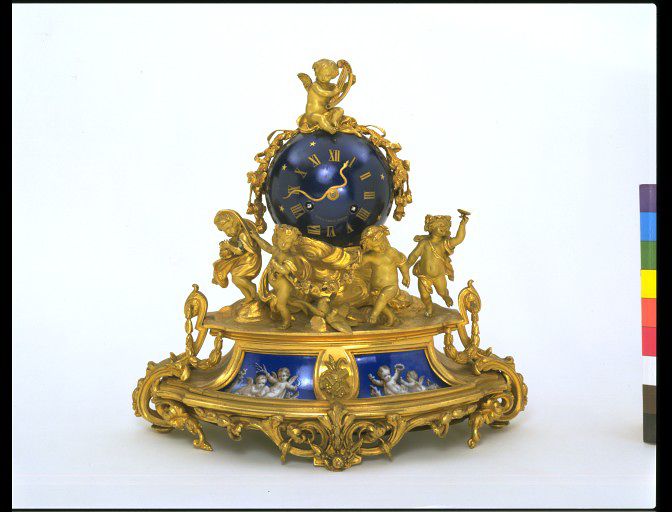
Clock
Place of origin:Paris (made)
Date:ca. 1855 (made)
Artist/Maker:Levy Frères (maker)
Materials and Techniques:Ormolu and enamel

Russian malachite and gilt bronze mantel clock.

French antique Louis XVIth mantel clock in white and black marble with ormolu signed Gavelle.

Antique French Late 18th C Directoire white marble & ormolu mantel Clock.
------------------------

A Napoleon III Ormolu and Patinated Bronze Three Piece Egyptian Garniture, Comprising a Mantel Clock and a Pair of Candelabra, by Leon Marchand, the Figures Cast from Models by Charles Cumberworth.
19th century

HERNAULT à NANTES ( 1744-1778 )
Main material : Gilded bronze
Secondary material : Marble
-------------------------

Antique French Louis Philippe Lyre clock in rosewood and marquetry under original glass dome.
unusual Rosewood and marquetry lyre clock on its original marquetry inlaid stand and under it's original glass dome. It is constructed of rosewood with superb marquetry inlay with white mouldings and ivory mounts to the side of the lyre. All flowers and trailing floral motifs. The movement is signed with a stamp Pons medaille d'honneur 1827.

Antique French Napoleon III porcelain & ormolu Lyre Clock.

Antique French Napoleon III porcelain & ormolu Lyre Clock.
----------------------

A quite superb early 19th century lead crystal & ormolu urn clock in very fine condition. The crystal with hobnail cut & with swirling body has the dial & movement inset & winged females to the shoulders

Antique French Charles X period Zapler clock by Leroy a Paris in mother of pearl and abalone.
A very small and unusual French ormolu, mother-of-pearl and abalone "Zapler" or "Cow Tail" clock by Leroy a Paris. Set upon an ebonised base the clock is in the form of a classical building perhaps the Opera House in Paris.The dial is signed Leroy a Paris and the movement is similarly signed. The two day movement is regulated by the pendulum that swings in front of the dial. Circa 1820.

Egyptian revival clock set with original polychrome paint on white metal.

extraordinarily fine Egyptian revival clock set with the original polychrome enamel paint and set upon original giltwood bases. The clock features an Egyptian noblewoman sitting in a neo-classical chair at her toilette being assisted by a handmaiden with mirror. The clock of temple form with six columns and all decorated with flowers and Anthemion. The two triple candle sconce
-------------------------------Животные-

A well modelled French elephant clock. The elephant, set upon a naturalistic rococco base of Louis XVth style, has his trunk raised ( a sign of good luck). The clock housing is in the form of a houda and perched upon the top is a cuoid figure blowing a shell horn. The movement has bezels front and back and the gilt bronze dial has 24 separate cartouches for the hours and minutes. 1880
-----------

Antique English Regency mantel or library clock in patinated bronze and ormolu.

The ormolu dial is surrounded by oak leaves and acorns while below the dial there are forget-me-not flowers. Beneath this is a fine mount of a lion's head within vine foilage. The base has a large mount of more grapes and vine leaves while to the side of the base is a mask of Bacchus with cornucopia. 8 day English fusee timepiece movement signed in full on the backplate of the movement " Purvis North Audley Street, Grosvenor Square". Circa
----------------------

Whimsical French Empire small size dog clock with child.

Upon the dog's back is a gilt bronze figure of a child holding a bunch of grapes in one hand and the winding key for the clock in the other. The watch, front wind and with beautiful enamel dial and blued steel hands. The watch is an early 19th century fusee with superb backcock and steelwork is signed Gme. Gille A PARIS No 255. A lovely and unusual piece. Circa 1810.

Antique clock in the form of a horse in classic Adam style from George III late 18th century period. The bronze case in the form of a horse with the clock sitting above and all standing on a white marble oval base.
Фарфоровые часы будут в отдельном посте. А еще много старинных интересных часов по тэгу "автоматоны" и "часы".
========================================
http://www.artfinding.com/
http://www.antique-clocks.co.uk/def
http://collections.vam.ac.uk/
http://www.britishmuseum.org/
http://www.thebowesmuseum.org.uk/collec
http://www.metmuseum.org/works_of_art/c
Старинные часы


Здесь есть очень редкие часы-автоматоны из музеев, часы 16 века, много очень интересных "сюжетных" часов.
-----------------АВТОМАТОНЫ-------------

Mechanical globe clock
Place of origin:Augsburg (made)
Date:1584 (made)
Artist/Maker:Roll, Georg (maker)
Reinhold, Johannes (maker)
Materials and Techniques:Copper alloy, cast, engraved, punched and gilt

This mechanical clock was bought by the Emperor Rudolph II in 1584 and housed in the Imperial Treasury in Prague. The globe served as a model of the universe simulating the movements of the sun, the moon and the stars. It could predict the movements of celestial bodies at any time in the past and the future and could tell the time by the position of the stars.
-----------------------


Clock
Place of origin:The Hague (made)
Date:ca. 1665-1670 (made)
Artist/Maker:Breghtel, Hans Conraedt (designer and maker)
van den Bergh, Adriaen (movement, maker)
Materials and Techniques:Silver and silver-gilt, pierced, embossed, filigree
-----------------------

Made in Poland
Date
1575-1585

Copper-gilt oval table clock; sides and base richly embossed and chased with formal scrolls and fruit; top engraved with delicate scrollwork and figures of man with pack and milkmaid and cow (automata); former holds staff and revolves in dial of which staff points out the hours.

---------------------------

Musical Clock with Spinet and Organ
Veit Langenbucher (1587 - 1631)
Maker
Samuel Bidermann (German, 1540 - 1622)
Object Name
Date
ca. 1625
-----------------------------------

Automaton.
Movement by James Upjohn (English, active ca. 1760). England, ca. 1760.
Gilt bronze, diamonds, paste, enamel clockworks.
A la Vieille Russie
Cooper-Hewitt
National Design Museum
-------------------------------

Automaton clock
Place of origin:London (made)
Date:ca. 1780 (made)
Artist/Maker:William Carpenter (maker)
Materials and Techniques:Clock case, mechanised figures and bells of gilt brass, with enamelled and glass paste decoration

This musical clock by William Carpenter is typical of the kind of elaborate exotic time-piece made in London for export to the East in the late 18th century. Turkey, China and India were the principal destinations for these clocks.
-------------------------------

Antique French Empire ormolu automaton clock of the dog Barry.

Unusual French Empire automaton clock depicting the famous rescue of a young boy by Barrie. The dog died in 1814 and this clock is dated 1816. Very fine quality case with original fire/mercury gilding. 8 day bell striking movement with silk suspension. The automaton outside bell strikes on the hour and half.
-----------------


A very rare French Empire automaton carouselle clock in patinated bronze and ormolu by Vaillant a Paris. Of exceptional quality to casting and finishing and with its original mercury gilding and patination. The octagonal base with applied ormolu mounts of cupids blowing trumpets, ormolu busts of hypographs to the sides, griffins below the white enamel dial and cornucopia around the upper edge. A central stem rises upon a superb stepped base and connected to this are three ormolu figures of Mercury, Cupid and the Jester sitting upon swans that at each hour or at will by turning a lever at the back, that rotate around the central stem for several rotations and then stop. Circa 1805.
----------------------------------------

Часы-автоматон в виде паровоза с чернильницей. Бронза, перламутр
Palais Royal automaton cowtail Zapler clock in the form of an early 19th century steam locomotive as a desk set with inkwell and sander. The mother of pearl desk set with four ormolu feet beneath a tray made of panels of mother of pearl. The facet cut blue glass inkwell and sander with ormolu tops set in floral ormolu holders.

1830
--------------------

DIT LE PASSE ET AVENIR L` ", described as the one who knows the past and sign foretells the future." France, Diraectoire era circa 1795. Ziffbl.. "Vaillant à Paris" chased and gilt bronze. Eight Days works with anchor gear, thread suspension of the pendulum, beat on bells to full-and half hour on bell.
--------------------------

French Water Wheel Timepiece


This rare and extraordinary French eight-day timepiece celebrates the advances made in the industrial field in the 19th century. Almost certainly crafted by the famed A.R. Guilmet, this clock is finely constructed of silver and patinated brass, in a form resembling a brick mill or factory, atop a base of brass and red marble.
----------------------------

automaton picture clock. Set in a fine gilt frame with the painting protected by the original glass. The picture in oils on metal is of a harbour scene, very well painted. A ship with storm sails only can be seen tossing and bucking in the fierce seas. There is a clock in the church on the hill. There is an early musical movement operated by pulling a cord. The automaton movement is by Cailly and the movement in the church although having a miniature dial is a full sized movement signed by Hry Mark with a silk suspension and striking the hours and halves on a gong. French. Circa 1840 34

Automaton and musical picture clock by Cailly and Hnry Mark Paris
---------------------

antique automaton clock set of industrial steamhammer and rollers.

automata clock with inverted Y shaped form in patinated and gilded bronze . The platform to the left of the clock with silvered bronze operator linked via a mock steam whistle handle to the imitation vent and whistle on top of the case. The steam hammer rising and falling with the pendulum. The patinated bronze dial with Roman numerals and gilt hands. The 8 day movement rack striking on a bell. The compound pendulum linked to the steam hammer making it rise and fall. The candelabras conforming to the clock but are in the form of roller presses.
----------------------------Башни-автома


Strasbourg Clock
Inscription Content: ISAAC HABRECHT FABER AVTOMATA RIVS ET CIVIS ARGENTORATENSIS 1589
Carillon clock; weight-driven musical clock; originally controlled by balance wheel, movement converted to pendulum in 18thC; outer case of gilded brass, engraved with figures personifying the three theological virtues (Faith, Hope and Charity), the three worldly virtues (Wisdom, Fortitude and Justice) and the three fates of man on the back.
Height: 140 centimetres
Width: 38.5 centimetres
Depth: 38.5 centimetres

The Trustees of the British Museum.
-------------------
-----------------

Antique automaton industrial clock in form of lighthouse with rotating light
industrial clock with torsion pendulum which as well as regulating the clock's timekeeping moves the large lighthouse prism lamp from side to side as the pendulum beats. In the shape of a typical 19th century lighthouse with brick or stone blockwork with a broad base and tapering towards the top, having windows set in the column. The clock has a black marble base and the clock face is set as the lighthouse door. The top of the lighthouse has a gallery surrounding it. The clock is of 8 day duration and strikes the hours and halves on a bell. The clock has a gilt dial and blued steel hands. France circa 1890
-----------------------------------


Fine ormolu and red marble ormolu automata clock in the form of a Gothic well, based on a similar piece in the Wallace Collection. There is an 8 day timepiece movement below the well and a barometer below that. The case stands upon a shaped griotte marble base. The fine ormolu case exhibits corbels rising to peacock finials and to the top of the cupola, dolphins. To the sides are seamonsters cast in high relief. A separate movement drives the automata in the form of a twisting glass rod giving the appearance of flowing water. The cupola is held up by four beautiful columns in the form of palm trees. France circa 1880.
---------------------------ЧАСЫ-БАШНИ---

Viennese Silver & Lapis Conical Clock Tower Set constructed with immense complexity and unmatched artistry, this rare and incredible Viennese conical clock tower set is one of the finest examples of Austrian silver and enamel craftsmanship ever made.


1865
----------------------------------------
------------------------------

913,000 €

Considered to be the greatest sculptural clock ever made, this exceptional Régulateur Louis XV surmounté du Motif le Temps is the second of only six known to have been made by the master cabinetmaker François Linke. The result of a very successful collaboration between Linke and designer Léon Messagé, this clock was constructed especially for the 1904 St. Louis Exposition after the success of it predecessor, which was itself specifically created for the 1900 Paris Exposition Universelle. Standing over 10 feet tall, the magnificent inlaid tulipwood and fruitwood case is richly decorated in mythological and natural motifs rendered in cast bronze ormolu.


--------------------------

Brass cased clock in shape of lighthouse; time-keeping movement with going barrel and platform escapement with ratchet-tooth lever escapement mounted half way up the tower; second clock-work mechanism housed in base turns the faceted glass cylinder that houses the light.
1875-1885
----------------------БРОНЗА------------

Clock
Place of origin:Augsburg (made)
Date:1564

Clock
Place of origin:Augsburg (made)
Date:1564 (made)
Artist/Maker:Metzger, Jeremias (maker)
Materials and Techniques:Gilt brass with enamelled silver dial ring

???http://collections.vam.ac.uk/item/O3

Francesco Righetti
Technique : Chiselled
Main material : Gilded bronze
Period of creation : 1810
Country of creation : Italy


Highly important and rare Italian neo-classical clock. Rome, circa 1810. Possibly after a design by Francesco Righetti. Francesco and Luigi Righetti, important goldsmiths, active at the end of the eighteen century in Rome
----------------------------------

- Vienna, circa 1810, the gilt bronze casing is held by four dolphins on a marble base and topped by an eagle. Marble pedestal with gilt ornaments on lion's feet, double pendulum in the form of horse carcasses.
----------------------------

Pendule au bon Sauvage - "Nègre nonsmoker. (probably Portrait of slave liberator Toussaint L'Ouverture, 1743-1803). Roller plaything: Capt. Henry (Geneva 1802-1811) with four different melodies. Bronze: attr. Pierre-Philippe Thomire (1751-1843). Paris to 1825th gilt, chased and patinated bronze.
--------------------------------

---------------------

Pendulum Clock "The chariots of Telemachus. Design and Bronze: attr. "Jean Andre kingdoms" (from 1752 to 1817). France, Empire era approximately 1800. Ziffbl sign .-. "Oudin eleve de Breguet. excellent composition with excellent gilt and patinated bronze eight-day movement with anchor gear, thread suspension of the pendulum strike on a bell to the full - and half an hour.
---------------

Pendulum Clock "The study of astronomy." Design and Bronze: attr. Claude Galle, 1807 France, age empire in 1810 and chased gilt bronze, marble vert-de-mer eight-day movement with anchor gear, thread suspension of the pendulum strike on a bell to the full - and half an hour.

Pendulum Clock "skeletonized." France Louis XVI era. around 1780. Ziffbl sign .-. "Lepine à Paris". gilt bronze, white marble, enamel.

Pendulum Clock "au bon sauvage" with the "Matelot". Design and Bronze: attr. MICHEL to 1808th France, Empire era to 1808th Ziffbl.-sign: "Lesieur à Paris" gilt and patinated bronze. Enamel Eye Eight-day movement with anchor gear, thread suspension of the pendulum, impact on a bell to the full - and half hour
-----------------------------

Pendulum Clock "au bon sauvage" with the "Portefaix. France, Empire period in 1810. Ziffbl.-sign. "Delecouillerie à Tournay" gilt and patinated bronze. Enamel Eye Eight-day movement with anchor gear, thread suspension of the pendulum, impact on a bell to the full - and half hour

Pendulum Clock "au bon Sauvage" L'Amérique ". France Period: 1799 draft and Directoire Bronze: attr. Jean Simon Deverberie (1784 to 1824). Gilded and patinated bronze eight-day movement with anchor gear, thread suspension of the pendulum, impact on a bell to full-and half-hour.
--------------------------

Pendulum Clock "Boat of Chronos" The love and time ". France Period: Empire at 1805th Ziffbl. sign.: BLANC & FILS PALAIS ROYAL. Gilded bronze eight-day movement with anchor gear, thread suspension of the pendulum, beat on. Bell to the full - and half an hour.
-------------------------

The Michelangelo Clock

A spectacular and rare French clock of marble and dore bronze by renowned Parisian ebenisteand artisan Paul Sormani, paying tribute to the master Michelangelo. Mounted on the front is a plaque which reads, 'MICHEL-ANGE ANNO 1474-1564 ROME. The enamel dial is signed, 'Sormani, Paris.' Circa 1870.
----------------------------------------

French clock in patinated and gilded bronze. The dial is flanked with Nikes and winged horses, it is surmounted by a gilded bronze Bacchus and a finely engraved ibex. Very good condition. Empire Period, Circa: 1815.
-----------------------


Pendulum bronze ormolu and patinated. Empire Period, 1800-1850. Escape to floss. Ringtone hours and half hours. Guaranteed in perfect working condition. C. Hirsch, an expert at the trial.

Antique French Empire mantel clock of Madame Recamier signed Vaillant 1805
---------------------------------------

Antique rare desk chess and gambling compendium in bronze and silvered bronze.
1880

Antique French Empire mantel clock of Madame Recamier signed Vaillant
Extraordinary quality French Empire mantel clock inspired by Madame Recamier. Dial signed by Vaillant, case almost certainly by Claude Galle, Napoleon's favourite Bronzier, and now with early 19th century English double fusee movement. Without doubt one of the most beautiful and stylish French Empire clocks ever made. The lovely female figure in classical dress sits upon the superb day bed with a pier glass behind her.
1805

French Empire mantel clock in ormolu of classical figure.
Pendulum Clock "au lion" with a plaything. France, Era: Louis XVI. approximately 1770th Sign Ziffbl..: DENIS - FRANCOISE DUBOIS, Paris, Champion 1767th Bronze plated and engraved gray-taken by a base with fire-gilded bronze applications. Carillon has 13 bells plays 10 melodies.
--------------------

Fine French Directoire or Empire period ormolu clock of Venus and Cupid attributed to Claude Galle.

French Directoire period mantel clock in two tone fire/mercury gilded ormolu of the finest quality which we can confidently attribute to one of Napoleon Bonaparte's favourite bronzier's Claude Galle. Signed on the white convex enamel dial "a Paris". 8 day bell striking movement with silk suspension. Original springs signed by the famous spring maker Monginot and dated to the month Floreal An 13 or May 1805, a matter of 3 months before Napoleon signed the edict re-establishing the Gregorian calendar to France.

Женщина у алтаря любви dated 1810.
Antique French Empire clock of woman at altar of love.

Antique French Empire ormolu clock of the "Sermon of Amor" or woman praying to Ovid
A magnificent version of this rare French Empire ormolu mantel clock “The Sermon of Amor”. The ormolu is in mint condition, untouched since the clock was made circa 1810. The white enamel dial is signed Henry a Abbeville and the hands are well cast and finished and mercury gilt. 8 day bell striking silk suspension movement.

French Empire mantel clock in patinated bronze and fire or mercury gilt ormolu of Narcissus looking at his reflection in the water. Superb ormolu mounts of sea monsters and naiads around the base. Paw feet with bullrush mounts above. To each side of the dial are female figures representing "La Source". To each side of the clock ormolu water falls into a shell from the mouth of a water god. Fine white enamel dial with superb gilt bronze hands. Large 8 day movement, bell striking the hours and halves and having flat bottomed plates and stamped to the plates M P. Dated 1808.

French Empire mantel clock of "La Lecture" designed by Reiche.
This is perhaps the most famous of a series of clocks that were designed by Jean-Andre Reiche at the beginning of the 19th century and were used extensively in the palaces and great State buildings in France and its Empire.
------------------------------

A very fine French Charles X period mantel clock after Thomire and almost certainly from the Thomire workshops. A popular model known as " The Bubble Blowers" it is a conceit on the fickleness and transience of time.

French empire ormolu mantel clock representative of astronomy. Good chamfered base on toupee feet with applied astronomical mounts. The muse stands beside the clock with a globe above. To the right is a period telescope. The enamel dial signed Botty Lefebre a Liege. 8 day bell striking movement on silk suspension. Circa 1810.

Miniature pendule au negre blackamoor clock. Circa 1810 French.It has all the original gilding, original enamelled eyes and is in excellent condition. 7 inches tall, 6.25 inches wide and 2.25 inches deep. It dates from circa 1805 and the movement is signed Marcus Lechner in Wien.
-----------------------

French Empire clock of Venus uncovering Cupid.

Circa 1806. Identical model in Palace of Fontainebleau bought in October 1806 for the secretariat d'etat de l'Empire francais a Fontainebleau, chambre de Madame Maret.

A rare and unusual French Directoire/ Empire clock depicting Daniel Defoe's "Robinson Crusoe". It shows Crusoe wearing goatskin, carrying his rifle and a palm umbrella and having scabbard and pistols in his belt. To his right is a palm tree and a parrot. This particular clock can be dated with certainty to 1809/1810 as some years ago we sold an almost identical model with the musical movement numbered 1902 ( some 60 movements later than this one) and original mainspring dated 1810.
---------------------Из разных материалов-----------------
----------------------------------------
Frédéric-Jules Rudolphi : Faune : Nessos : Amour : Déjanire : Enlèvement de Déjanire par Nessos : Encrier-pendule
Date : 1844
Material : Silver, Gilded silver, Lapis-lazuli, Cameo
Frédéric-Jules Rudolphi : Faune : Nessos : Amour : Déjanire : Enlèvement de Déjanire par Nessos : Encrier-pendule

Antique French Napoleon III Blue John and ormolu circle de tonneau vase clock
Exceptional and very rare English Derbyshire blue john vase clock. The main body is polished from one large piece of 'blue john' of distinctive colouration. Ormolu swan neck handles and acanthus leaf mounts bisect the marmo nero belgio base slips with the 'blue john top surmounted with an ormolu pineapple finial. The French movement with annular dial, lever escapement& bell striking the hours and halves. Circa 1860-80.
----------------------

Слоновая кость
French Victorian boar's tusk ivory and gilt clock and 3 arm candelabra set (pair of candelabra: 24" high) (circa 1860)

Clock
Place of origin:Paris (made)
Date:ca. 1855 (made)
Artist/Maker:Levy Frères (maker)
Materials and Techniques:Ormolu and enamel

Russian malachite and gilt bronze mantel clock.

French antique Louis XVIth mantel clock in white and black marble with ormolu signed Gavelle.

Antique French Late 18th C Directoire white marble & ormolu mantel Clock.
------------------------

A Napoleon III Ormolu and Patinated Bronze Three Piece Egyptian Garniture, Comprising a Mantel Clock and a Pair of Candelabra, by Leon Marchand, the Figures Cast from Models by Charles Cumberworth.
19th century

HERNAULT à NANTES ( 1744-1778 )
Main material : Gilded bronze
Secondary material : Marble
-------------------------

Antique French Louis Philippe Lyre clock in rosewood and marquetry under original glass dome.
unusual Rosewood and marquetry lyre clock on its original marquetry inlaid stand and under it's original glass dome. It is constructed of rosewood with superb marquetry inlay with white mouldings and ivory mounts to the side of the lyre. All flowers and trailing floral motifs. The movement is signed with a stamp Pons medaille d'honneur 1827.

Antique French Napoleon III porcelain & ormolu Lyre Clock.

Antique French Napoleon III porcelain & ormolu Lyre Clock.
----------------------

A quite superb early 19th century lead crystal & ormolu urn clock in very fine condition. The crystal with hobnail cut & with swirling body has the dial & movement inset & winged females to the shoulders

Antique French Charles X period Zapler clock by Leroy a Paris in mother of pearl and abalone.
A very small and unusual French ormolu, mother-of-pearl and abalone "Zapler" or "Cow Tail" clock by Leroy a Paris. Set upon an ebonised base the clock is in the form of a classical building perhaps the Opera House in Paris.The dial is signed Leroy a Paris and the movement is similarly signed. The two day movement is regulated by the pendulum that swings in front of the dial. Circa 1820.

Egyptian revival clock set with original polychrome paint on white metal.

extraordinarily fine Egyptian revival clock set with the original polychrome enamel paint and set upon original giltwood bases. The clock features an Egyptian noblewoman sitting in a neo-classical chair at her toilette being assisted by a handmaiden with mirror. The clock of temple form with six columns and all decorated with flowers and Anthemion. The two triple candle sconce
-------------------------------Животные-

A well modelled French elephant clock. The elephant, set upon a naturalistic rococco base of Louis XVth style, has his trunk raised ( a sign of good luck). The clock housing is in the form of a houda and perched upon the top is a cuoid figure blowing a shell horn. The movement has bezels front and back and the gilt bronze dial has 24 separate cartouches for the hours and minutes. 1880
-----------

Antique English Regency mantel or library clock in patinated bronze and ormolu.

The ormolu dial is surrounded by oak leaves and acorns while below the dial there are forget-me-not flowers. Beneath this is a fine mount of a lion's head within vine foilage. The base has a large mount of more grapes and vine leaves while to the side of the base is a mask of Bacchus with cornucopia. 8 day English fusee timepiece movement signed in full on the backplate of the movement " Purvis North Audley Street, Grosvenor Square". Circa
----------------------

Whimsical French Empire small size dog clock with child.

Upon the dog's back is a gilt bronze figure of a child holding a bunch of grapes in one hand and the winding key for the clock in the other. The watch, front wind and with beautiful enamel dial and blued steel hands. The watch is an early 19th century fusee with superb backcock and steelwork is signed Gme. Gille A PARIS No 255. A lovely and unusual piece. Circa 1810.

Antique clock in the form of a horse in classic Adam style from George III late 18th century period. The bronze case in the form of a horse with the clock sitting above and all standing on a white marble oval base.
Фарфоровые часы будут в отдельном посте. А еще много старинных интересных часов по тэгу "автоматоны" и "часы".
========================================
http://www.artfinding.com/
http://www.antique-clocks.co.uk/def
http://collections.vam.ac.uk/
http://www.britishmuseum.org/
http://www.thebowesmuseum.org.uk/collec
http://www.metmuseum.org/works_of_art/c